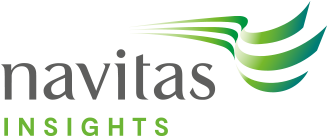
The Learning Management System: a platform for learning innovation
The evolution of the Learning Management System (LMS) mirrors the changes we have seen in education philosophy and teaching methods over the past decade. As the classroom environment moves away from ‘distributing knowledge’ to interaction and collaboration, our LMS needs to provide means for active learning, based on a flexible platform which can be responsive to our colleges’ needs.
Perhaps paradoxically, successful innovation requires a robust structure beneath it – especially in education where real people’s futures are invested in our services. Over the past year, as we migrated from multiple versions and configurations of Moodle to a standardised and consistent Global Moodle Hosting Platform, we’ve learned a bit about what it takes to make our LMS work now, as well as in to the future.
Learning and teaching come first
As learning technology leaders, we need to look at any change through a fundamental lens: the learning and teaching approaches that our LMS supports and promotes.
That means understanding the LMS in its current context, but not being bound by our organisation’s existing set of features and practices. As Jacobson & Reimann explained in their 2010 research into learning technology, “inventions are not ‘pushed’ fully-formed into an environment, they are introduced into an environment and often foster changes in it that lead to iterative changes and developments of the original invention itself.” In our case, we want to do better and involve Navitas teachers and leaders in the design process explicitly. To do all this, you need a system that can adapt as you hypothesise, test, and learn from iterations of innovation.
From repository to ecosystem
The LMS has come a long way since the days of taking distance learning from snail mail to email by simply storing PDF course content online.
While many institutions have found that their LMS still gets used as a content repository, we are starting to see a ‘distributed system’ approach to LMS design. One that can potentially manage the entire learning process.
Learners use a range of different tools, not just an LMS, so the ideal learning ecosystem tracks learners across all these systems. They could be in a workshop on Zoom, then collaborate on Teams using a shared OneNote or Word Doc, submit that to their lecturer, and then do a peer-review via a peer-grading plugin.
This is where the Experience Application Programming Interface or xAPI and a learning store come in. You can track all of these activities in one place, understand learner journeys (successful and otherwise), and optimise the successful paths while identifying those at risk of failing. Some of that evolution is already starting to occur, and Bill Zuber’s work at SAE Australia is a good example of how we can start to use xAPI data to better understand our students.
Achieving this true learning ecosystem is our ultimate goal at Navitas, but we also have the real complexity – at times, the difficulty – of integrating disparate applications to create a seamless experience for our learners and teachers.
Choosing the right LMS framework
With more than 120 colleges around the world, implementing the Global Moodle Hosting Platform was no simple task. We needed a system that could adapt and respond to very different geographical contexts, learning structures and course requirements – from music studies to counselling to English language to our university pathway programs. We also needed to overcome the potential security challenges of our previously varied approach to hosting, where managing upgrades was challenging. This work in itself is a great achievement for Navitas, and the cooperation between IT, Learning & Teaching Services, and our colleges has been critical.
Our system had to be customisable for different college needs, including the way it looks and feels. Think about how it looks when you walk into a beautifully-maintained college grounds, and then consider whether your LMS design is inspiring and engaging as a learning environment. We know we have work to do on this at Navitas, but now we have a baseline to start from.
And finally, we wanted a system that could integrate all the features our different colleges need, whether that is managing grades, capturing live lecture streams, monitoring attendance, or promoting active learning.
While you need to invest time into Moodle to make that happen, it offered the flexibility we needed and we can partner with external providers to manage the security and performance of new plug-ins.
Converge and diverge
With the Global Moodle Hosting platform, we can now test innovative new features or re-imagine learning models in a safe technical environment. Indeed, refreshing a testing environment for design work can happen in a matter of days. For example, Josh Valeri (General Manager, Digital Learning and Innovation for our Careers & Industry division) and his team are currently working with SAE Australia to re-think their Master of Creative Industries – redesigning their Moodle space in the process.
With so many different models, platforms and plug-ins available today, it can be challenging to navigate the LMS and EdTech market. But if you stay resolutely focused on supporting learning and teaching, you can select a combination of tools to suit your college.
For more insights into the evolution of the LMS, read Lindsay’s article for CIO Advisor, Making your choice in times of change.



